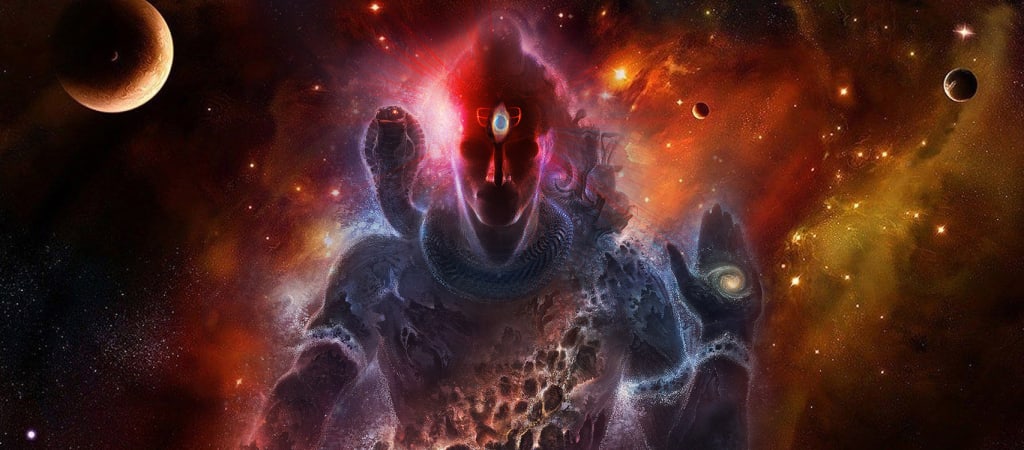The great night of Lord Shiva
Maha Shivaratri: The Night of Lord Shiva's Greatness

1. The Legend and Significance of Shivaratri
Introduction to the festival of Shivaratri
Shivaratri is a significant Hindu festival celebrated annually to honor Lord Shiva. The festival falls on the 14th day of the dark fortnight of the Hindu month of Phalguna, which usually falls in February or March. The festival has its roots in ancient Hindu mythology, which tells the story of Lord Shiva's marriage to Parvati. Devotees celebrate the festival by fasting, performing rituals, and staying awake all night in devotion to Lord Shiva. Shivaratri is a time for spiritual renewal, self-reflection, and devotion to Lord Shiva.
Significance of Lord Shiva in Hinduism
Lord Shiva is one of the most significant deities in Hinduism and holds a prominent place in the religion's pantheon. He is often regarded as the destroyer of evil and the god of meditation, yoga, and arts. Lord Shiva is also known for his benevolence, and many Hindus worship him as a source of strength, guidance, and protection. His worship is considered to be an essential aspect of spiritual growth, and devotees often seek his blessings for good health, wealth, and prosperity. In Hindu mythology, Lord Shiva is associated with various symbols and stories, and his significance is celebrated during festivals like Shivaratri.
Why the festival is celebrated and its spiritual significance ?
The festival of Shivaratri is celebrated to honor Lord Shiva, one of the most significant deities in Hinduism. The festival has both religious and spiritual significance, and its celebration is believed to bring immense blessings to the devotees. The festival is observed as a day of spiritual introspection, fasting, and abstinence, where devotees spend the day meditating and engaging in devotional practices. The all-night vigil that is observed during Shivaratri is believed to awaken the spiritual energy within oneself, leading to spiritual growth, purification, and enlightenment. The festival is also celebrated as a symbol of the triumph of good over evil and marks the time when Lord Shiva is believed to have performed the cosmic dance of creation, preservation, and destruction. For many devotees, Shivaratri is a time for seeking the blessings and guidance of Lord Shiva in their personal and spiritual lives.
2. Customs and Traditions of Shivaratri
Fasting and abstinence during the festival
Fasting and abstinence are an essential part of the Shivaratri festival, and many devotees observe strict practices of self-discipline during this time. Fasting is typically observed for the entire day, with devotees abstaining from food, water, and even sleep. This is believed to help purify the body and mind, awaken spiritual energy, and cultivate devotion to Lord Shiva. Some devotees may choose to consume only fruit or milk during the fast, while others may choose to consume nothing at all.
Traditional foods and dishes associated with Shivaratri
Although fasting is a significant part of the Shivaratri festival, there are also some traditional foods and dishes that are associated with the festival. Many devotees prepare special dishes during this time that are offered to Lord Shiva as part of the puja rituals. Some of the common foods and dishes associated with Shivaratri include:
1. Sabudana Kheer: A sweet pudding made with tapioca pearls, milk, and sugar.
2. Thandai: A traditional Indian drink made with milk, almonds, and spices.
3. Bhang Pakoras: A deep-fried snack made with a mixture of flour, spices, and bhang (cannabis leaves).
4. Fruits: Many devotees consume only fruit during the fast, and fruits such as bananas, apples, and pomegranates are commonly eaten.
5. Vrat Ke Chawal: A dish made with rice, ghee, and cumin seeds that is often eaten during the fast.
These foods are often prepared and offered to Lord Shiva as part of the puja rituals, and they are also shared with family and friends during the festival.
3. Shiva and His Many Forms
Lord Shiva is one of the principal deities of Hinduism, worshipped as the supreme being who represents destruction and transformation. He is also known as Mahadeva, the great god, and is considered one of the three major deities, along with Brahma and Vishnu.
There are many forms of Lord Shiva that are worshipped in Hinduism. One of the most popular forms is the Nataraja, the lord of dance, who is depicted dancing in a circle of flames, representing the cyclical nature of life and death. Another form is Ardhanarishvara, a composite form of Shiva and his consort Parvati, representing the unity of masculine and feminine energies.
Shiva is also worshipped in the form of Lingam, a symbol of his creative energy, and as Mahakala, the lord of time and death. He is also associated with various animals, such as the bull Nandi, the snake Vasuki, and the tiger skin he wears as a symbol of his power.
Each form of Lord Shiva represents a different aspect of his character and teachings. His many forms are celebrated and worshipped in Hinduism, and he is revered as a powerful and transformative deity who can help his devotees overcome obstacles and challenges in their lives.
4. The Symbolism of Shiva
Introduction to the symbols associated with Lord Shiva
Lord Shiva, one of the principal deities of Hinduism, is associated with various symbols that represent his character and teachings. Some of the most common symbols associated with Lord Shiva include:
1. Trishul: A trident, which represents the three aspects of Shiva - creation, preservation, and destruction.
2. Nandi: A bull, which serves as the mount of Shiva and represents strength and virility.
3. Rudraksha beads: Beads made from the seeds of the Rudraksha tree, which are believed to have spiritual and healing properties.
4. Lingam: A phallic symbol that represents Shiva's creative energy and is often worshipped as a symbol of his power.
5. Snake: Shiva is often depicted wearing a snake around his neck, which represents his control over death and rebirth.
6. Damru: A small drum that Shiva is often depicted playing, which represents the rhythm of the universe.
7. Vibhuti: Holy ash that is often worn by Shiva's devotees, which represents his power and purity.
Each of these symbols has a deep spiritual significance in Hinduism and is associated with the transformative teachings of Lord Shiva. They are commonly used in Hindu art, rituals, and ceremonies to honor and connect with the divine energy of Shiva.
5. Shiva Bhakti
Concept of Bhakti in Hinduism
• Bhakti is a Sanskrit term that refers to the concept of devotion, love, and surrender to a personal deity or divine power in Hinduism. It is one of the main paths of spiritual practice in Hinduism and is considered a powerful means of attaining spiritual liberation and union with the divine.
• Bhakti involves developing a deep and loving relationship with a chosen deity, such as Lord Vishnu, Lord Shiva, or the goddess Durga, and engaging in various forms of devotional practices, such as singing hymns, chanting mantras, offering food, and performing puja (worship rituals).
• The role of devotion in the practice of Hinduism
• Devotion, also known as Bhakti, plays a central role in the practice of Hinduism. It is considered one of the most important paths of spiritual practice and is the primary means by which devotees cultivate a personal relationship with the divine.
• Devotion involves surrendering oneself to a chosen deity and engaging in various forms of worship, such as singing hymns, reciting prayers, performing puja (worship rituals), and participating in religious festivals. The goal of devotion is to develop a deep and loving relationship with the divine, which is believed to bring about spiritual transformation and liberation.
Conclusion
Shivaratri is a significant Hindu festival that honors Lord Shiva, and is celebrated with great devotion and enthusiasm by millions of people around the world. It is a time for spiritual reflection, purification, and rejuvenation, during which devotees seek to deepen their connection with the divine through various spiritual practices. Shivaratri represents the triumph of light over darkness and the victory of good over evil, and serves as a powerful reminder of the importance of devotion, surrender, and spiritual practice in the pursuit of spiritual awakening and liberation.
About the Creator
The Success man
The Success man has honed their writing skills and developed a unique voice that engages readers and inspires them to learn more.






Comments
There are no comments for this story
Be the first to respond and start the conversation.